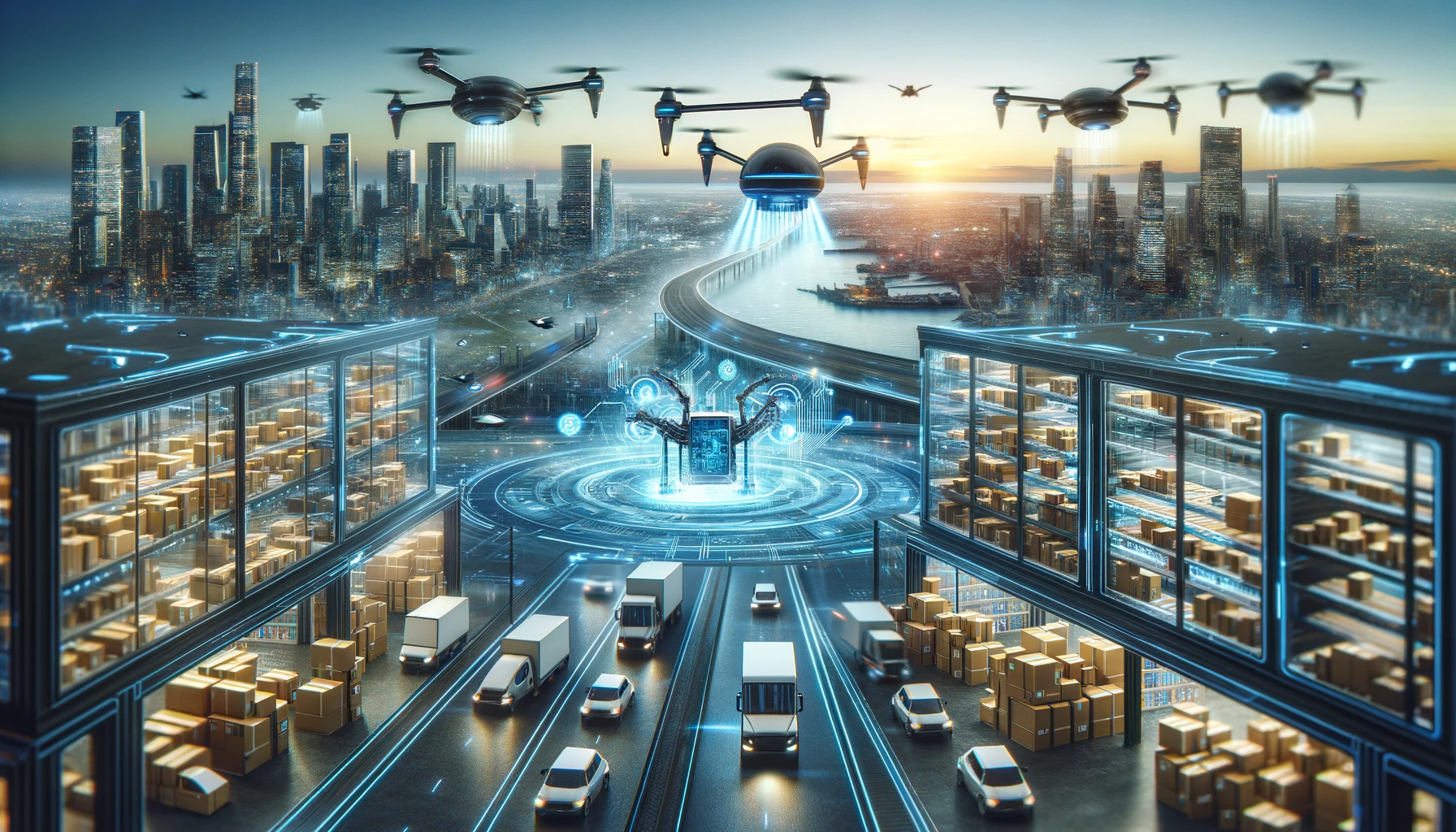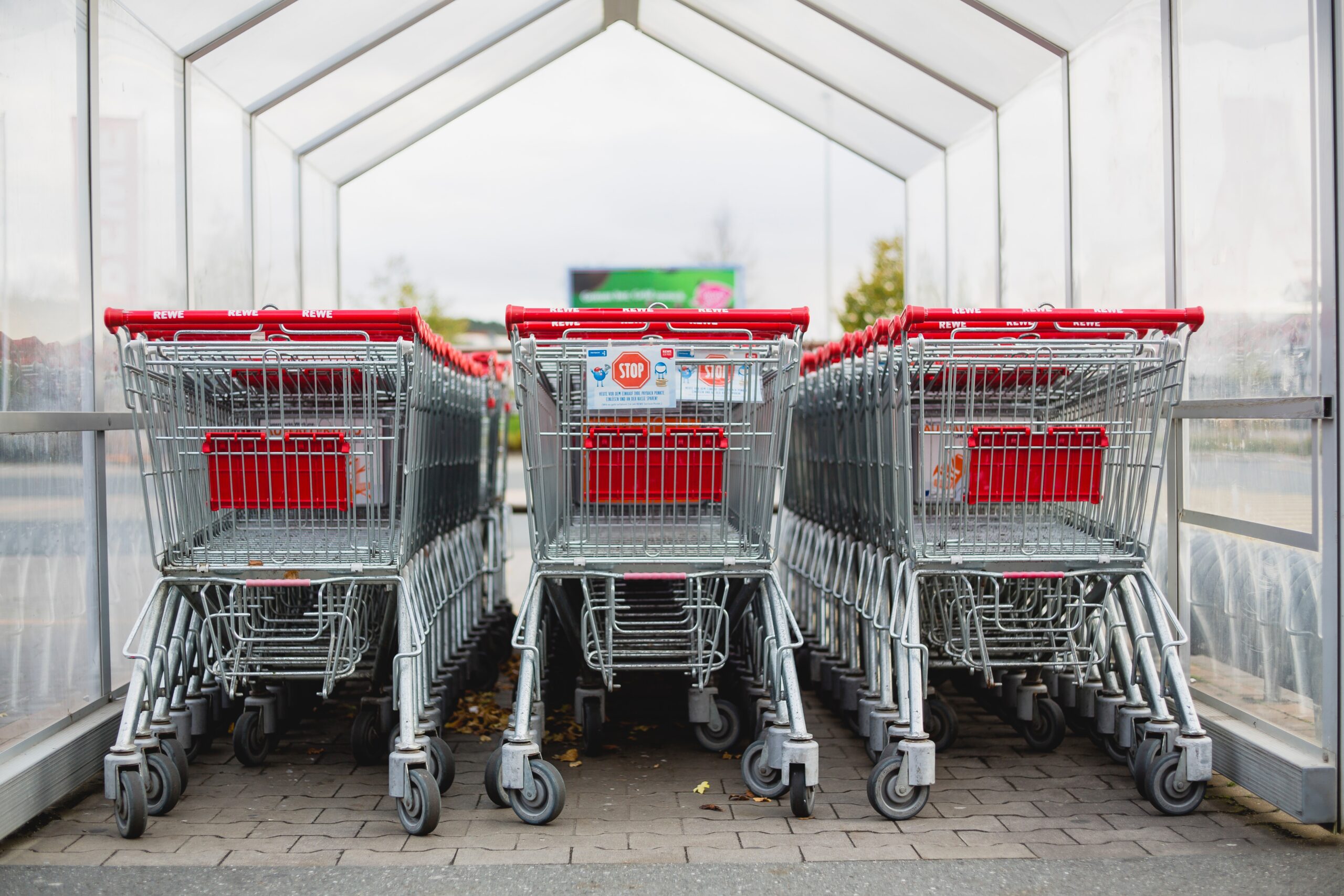Introduction: The role of AI in same-day delivery
Artificial intelligence (AI) has infiltrated various sectors of the economy over the years, making tasks more efficient and precise. It is perhaps the most influential technological advancement of this era, with applications across industries including supply chain and logistics. AI has unleashed a wave of capabilities that make it possible to improve the accuracy, speed and efficiency of supply chains and systems for ecommerce improve delivery. As demand for same-day and next-day ecommerce deliveries continues to increase, companies are continually looking for ways to meet customer expectations without compromising operational efficiency and cost-effectiveness.
AI plays a crucial role in automating and streamlining supply chain processes, shortening delivery times and optimizing delivery routes. AI enables companies to provide more reliable and faster delivery services, increasing customer satisfaction. The technologies powered by AI, such as machine learning (ML), robotics, automation and predictive analytics, have the potential to reshape the face of the logistics industry by transforming the interactions between retailers, logistics providers and consumers.
In addition, AI's predictive capabilities provide benefits in supply chain management, including demand forecasting, inventory management and route optimization. These capabilities can significantly reduce time and costs in the delivery process. Advances in AI technology, including machine vision, speech recognition and robotics, can further contribute to automating and accelerating the packaging and sorting process.
AI is not just an additional function in logistics; it is a circuit breaker that integrates with the system and revolutionizes the e-commerce industry by making same-day and next-day ecommerce deliveries a reality. Let's look at the key ways AI can make this possible.
Streamline transportation routes
One of the most practical applications of AI in logistics is optimizing transport routes. Efficient route planning is critical for same-day and next-day ecommerce deliveries as it directly impacts the time and cost of deliveries. AI technologies, combined with geographic information systems (GIS) and GPS, can analyze large amounts of data, including traffic patterns, road conditions and weather forecasts, among others.
By analyzing this data, AI can generate the most efficient routes in real time, avoiding traffic congestion and road hazards, ensuring timely and safe delivery. This level of optimization significantly reduces the time required for transportation, making it possible for companies to meet same-day and next-day delivery promises.
Additionally, AI's ability to learn and adapt to patterns and trends allows for continuous improvement in route optimization. Machine learning algorithms can analyze and learn from historical data about the most frequently driven routes, delivery times and delays, and use this knowledge to further improve efficiency. This reduction in transit time reduces fuel consumption and costs associated with the delivery process, improving the bottom line.
Furthermore, this smart route planning function can also handle last-minute orders and dynamic changes in delivery instructions, thanks to AI's real-time decision-making capabilities. By seamlessly integrating these automated dynamic routing capabilities into their systems, companies can increase their delivery efficiency and reliability, increasing customer satisfaction and loyalty.
Predictive analytics for demand forecasting
Another area where AI can significantly contribute to making same-day and next-day ecommerce deliveries realistic is demand forecasting. Predictive analytics – an AI technology that analyzes historical data and current trends to predict future results – plays a crucial role here. It allows companies to make accurate forecasts of demand, allowing them to plan inventory and resource allocation, thereby reducing delivery time.
An effective demand forecasting system can predict which products will be in demand and in which locations. By pre-positioning these products closer to expected demand hotspots, companies can guarantee faster delivery. This proactive approach minimizes delivery distance and time, making same-day or next-day deliveries more feasible.
AI's machine learning capabilities can be used to continuously improve forecast accuracy. ML algorithms can learn from the patterns in the data and adjust the prediction model accordingly. This continuous learning cycle allows companies to stay ahead of the demand curve and maintain optimal inventory levels, reducing the risk of stockouts and excess inventory.
In addition, accurate demand forecasts allow companies to plan their delivery fleets more effectively. By knowing which products are likely to be ordered, companies can plan their transportation resources more efficiently, reducing the number of trips and reducing delivery times and costs.
Automated sorting and packaging
The process of sorting and packaging products is another crucial aspect of the logistics journey that can directly impact the speed and accuracy of deliveries. This is where AI-powered automation and robotics can drive substantial improvements. AI can be used to develop smart sorting systems that automatically sort packages based on size, weight, destination or other relevant criteria, reducing the need for manual labor and minimizing errors.
Once the sorting process is completed, AI-powered robots can pack the products efficiently. These robots use machine vision technology to identify products of different shapes and sizes, process them and then package them safely and compactly. This level of automation significantly reduces the time required for sorting and packaging, speeding up the overall delivery process.
In addition to speed and efficiency, AI-powered sorting and packaging systems also help improve accuracy in the delivery process. They can eliminate human error, which can lead to incorrect deliveries and returns – factors that seriously impact the feasibility of same-day or next-day deliveries. By reducing these operational errors, companies can significantly improve the success rate of their deliveries.
Furthermore, these AI systems can also adapt to changes in product mix and demand thanks to their learning capabilities. They can continuously analyze the data and learn from their performance to improve sorting and packaging accuracy and efficiency over time. This adaptability makes them invaluable to companies striving to make same-day and next-day ecommerce deliveries a reality.
Optimize warehouse management
Warehouses form the backbone of logistics and... supply chain industry. The efficiency with which a warehouse operates has a major influence on its delivery speed. AI can help companies optimize their warehouse management, making parcel sorting, storage and retrieval faster and more accurate.
AI-powered warehouse management systems can automate various functions. They can monitor inventory levels in real time, predict when replenishments are needed and automate the ordering process. This real-time tracking and reactive approach ensures that the right products are always in stock, reducing delays in the delivery process.
Furthermore, AI can power autonomous robots to work in warehouses. These robots can pick and place items, move them around the warehouse and even load them into delivery trucks. They can perform these tasks quickly and accurately, reducing labor costs and minimizing human error, which in turn speeds up the delivery process.
AI-powered predictive maintenance can also play an important role in warehouse optimization. By analyzing data from various sensors and machines, the AI system can predict when a machine is likely to break down, allowing for preventative maintenance. This can reduce unexpected downtime, ensuring warehouse operations remain uninterrupted and deliveries proceed as planned.
Improving last-mile delivery efficiency
The last kilometer of the delivery process, where the package arrives at the customer, is often the most complex and expensive part. It is also a crucial deciding factor in meeting same-day or next-day delivery obligations. This is due to the challenges such as unexpected traffic, wrong addresses, customers not being present to receive deliveries, and so on.
AI can address these challenges through technologies such as machine learning and data analytics. It can predict the best delivery time based on customer availability, reduce failed delivery attempts and save time and resources. AI can also guide the delivery person to the most efficient route in real time, taking into account traffic and other variables.
Furthermore, AI-based chatbots and voice assistants can play a crucial role in ensuring successful last-mile deliveries. They can communicate with customers, provide updates on delivery status and even reschedule deliveries based on customer responses. Such real-time communication reduces the number of failed delivery attempts and improves customer satisfaction.
Finally, AI can improve the operational efficiency of last-mile delivery through autonomous vehicles and drones. Drones for example, can bypass traffic and make quick deliveries over short distances. Autonomous vehicles, on the other hand, can operate 24 hours a day, reducing delivery times. While these technologies are still evolving, they demonstrate the disruptive potential of AI by making same-day and next-day ecommerce deliveries a reality.
Conclusion
The need for faster delivery times is not just a fleeting trend; it's an expectation that continues to rise amid the ecommerce's rapid evolution. Meeting this demand for same-day or next-day delivery poses enormous challenges for companies, especially in the areas of operational efficiency, cost-effectiveness and customer satisfaction. By harnessing the potential of AI, companies can overcome these challenges and turn them into opportunities.
AI's capabilities to streamline transportation routes, improve demand forecasting, automate sorting and packing, optimize warehouse management, and improve last-mile delivery efficiency provide a robust foundation for same-day and next-day ecommerce deliveries. However, the success of AI in achieving this largely depends on how well companies integrate these technologies into their existing systems and processes.
Although AI offers enormous potential, it is not a magic wand that can immediately solve all challenges. To fully leverage the power of AI, companies must invest in AI talent and infrastructure, develop robust data strategies, and foster a culture of continuous learning and adaptation. Given the dynamic nature of the logistics industry and growing customer expectations, companies that succeed will not only make same-day and next-day deliveries a reality, but also gain a significant competitive advantage in the marketplace.













